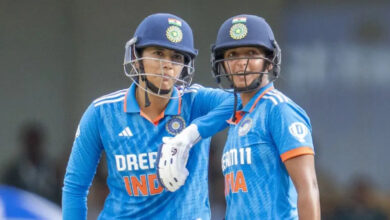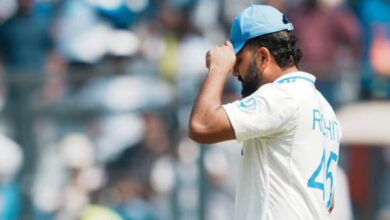India vs England: Behind Dhruv Jurel’s military-style salute, his military-style preparation, to excel in front and behind the stumps | Cricket News

After completing his half-century, Dhruv Jurel produced a military-like salute. The gesture, he said, was to his father, a Kargil War veteran. “Yesterday, I spoke and he indirectly said ‘Son, at least show me a salute’. That is what I have been doing all my growing-up years. It was for him,” he said after the day’s play.
Jurel had not yet talked to his father Nem Singh, a retired Havildar, who had to pawn his wife’s jewellery to buy a bat. “I had to borrow 800 rupees then because we didn’t have money. He later wanted a kit bag but it was very expensive, some 6,000 rupees. I said ‘mat khelo, itna paisa nahi hai (leave the game, I don’t have so much money).’ But he locked himself in the bathroom and his mother decided to pawn her only gold chain, which was how we managed to buy his first kit bag,” Nem Singh had once told this daily.
All their sacrifices have been rewarded as Jurel made his father proud with an invaluable 90 in just his second Test, that too on a dicey surface. Had he scored 10 more runs, it would have been ever more memorable. But he has no regrets.
“I am not worried too much about the century. This is my debut series. I am desperate to lift the trophy in my hands, to play Test cricket was one big dream for me. All I thought was about what the team needed. How much time I can spend in the middle and score some runs, and how much it will help the team,” he said.
India’s Dhruv Jurel celebrates scoring fifty on the third day of the fourth Test cricket match between India and England, in Ranchi. (PTI)
Jurel’s plans were simple, especially when guiding the lower-order batsmen. “There was no specific plan, but it is important to show confidence and faith. I have to tell them that they can bat. That is what we planned and it worked out. Both (Akash Deep and Mohammed Siraj) are decent batters, they bat in the IPL as well. I told them the same and it was necessary. They did well,” he explained.
When batting, Jurel had to make adjustments. He was conscious to not play square of the wicket. He loves to cut and can sweep too. But he largely played straight. All of his boundaries came between long-off and wide deep midwicket. Just four runs came in the direction of third man; as many as 17 came in the long-off region, four each through cover and point. He eked out a lone single through fine leg.
“The wicket was low bounce, so obviously the runs stopped coming from square of the wicket. I felt I had to play straight. The ball was keeping low and I kept it in my subconscious mind that I had to be ready for that and play straight. Whatever shot I hit, I hit straight,” he said.
It pays to prepare
Similarly, when keeping wicket, he made a slight adjustment. Whereas in Rajkot, his gloves were semi-open in his crouch, he fully spread them here, so that he could deal better with the low bounce and inconsent spin, basically giving a wider area to catch the ball. He was not collecting the ball sideways but looking to gather it as he would take a normal catch. He was also standing a little behind than he normally would so that he got adequate time to react. “I got a fair idea watching Ben Foakes, the ball was keeping low, but I was ready. I had to change my stance a bit and these things you have to adapt as soon as you can,” he said.
Likewise, he had pored over clips of James Anderson and his allies to study the channels they bowl and the areas they hit. “Hard work is there, but I believe in visualisation and manifestation. Whatever match or series, one or two weeks prior, I start preparation looking at the bowling line-up. Who will bowl and how I will play them. I play out the scenarios and it helps. I visualised that whoever is the bowler – Anderson, Mark Wood, Tom Hartley – whatever they bowl, I see their videos, where they bowl, and where my zones are, and how I can hit them,” he elaborated.
For someone who first made his mark in the IPL, Jurel said he is not a naturally aggressive batsman. “It’s all about how you respond to a situation. In the IPL, you see the situation. I get 15 balls to score 30 runs. I cannot defend, right? Here the situation needed me batting long and I cannot do that just hitting. There is risk. So I focused on spending time on the wicket,” he said.
His words, like his batting and wicket-keeping, sparkle with maturity that belies his age.







